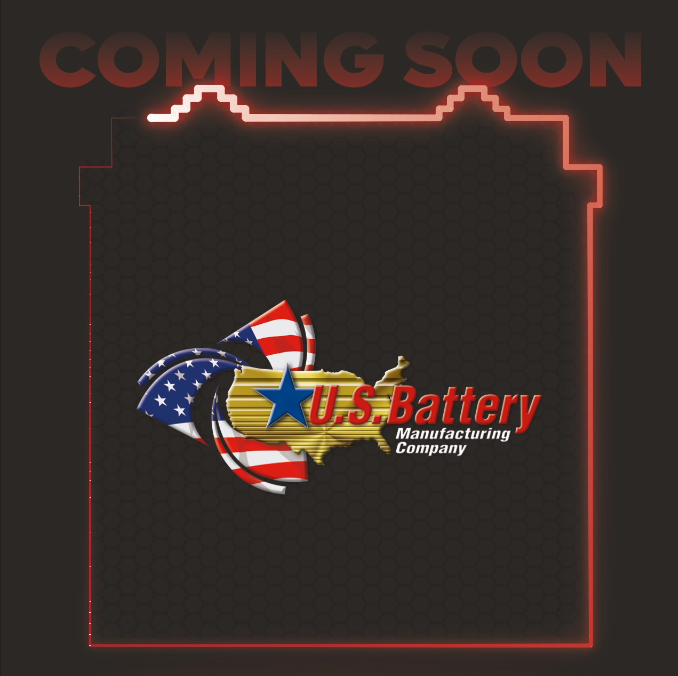The rechargeable lead-acid battery has been in continuous development since its initial introduction separately by Siemens, Sinsteden and Planté during the period of 1852 – 1859.
Since then battery manufacturers such as U.S. Battery, which is celebrating its 95th anniversary this year, have continually sought to improve upon the performance, life and efficiency of deep-cycle batteries for various commercial and industrial uses.
Deep-Cycle batteries’ overall dependability, cost-effectiveness and recyclability have enabled them to continue in widespread use since their initial development. When John Anderson took over the reins of U.S. Battery early in the company’s history, he believed it was essential to look for ways to improve upon the basic battery technology. Over the decades, U.S. Battery continues Mr. Anderson’s legacy by modernizing and innovating deep-cycle battery designs in multiple ways. These improvements enable the company’s products to stay ahead of the changing demands of consumers and the various industries it serves.
One of the first innovations by U.S. Battery was to increase the efficiency of the grid alloys used in the current collectors called grids. Historically, during cycling the positive grids would slowly corrode and grid corrosion was found to be a primary failure mode. U.S. Battery improved upon the corrosion resistance of the grids by adding selenium to the antimony grid alloys. The addition of selenium acts as a grain refiner to produce a fine-grain alloy that increases its strength and electrical conductivity as well as reducing corrosion. The effect of this improvement is that positive grid corrosion is no longer a primary failure mode and the cycle life of FLA deep-cycle batteries has been significantly increased.
The active materials pasted on the grids in a battery’s positive electrodes have also been improved over the years. The active materials start out as basic lead sulfates and tetrabasic lead sulfate (TTBLS) has been shown to provide the longest cycle life. Historically, TTBLS crystals have been ‘grown’ in a process called hydroset. Because growing crystals depends on many factors such as time, temperature, humidity, etc., the sizes of the finished TTBLS crystals can be unpredictable. US Battery has found that through the use of crystal seeding additives, the size and distribution of these crystals can be controlled to produce consistently small crystals distributed uniformly throughout the electrode. Using a process the company calls Xtreme Capacity, US Battery was able to provide customers with increased initial capacity, faster cycle-up to full rated capacity, higher peak capacity, and improved charging using the wide range of charger technologies used in various applications.
As improvements to the positive electrodes were made, US Battery realized that improvements to the negative electrodes were needed to balance the active materials’ performance in the battery. Improving the negative electrodes’ performance allowed US Battery to increase the battery’s overall capacity and extend service life. To do this, improved expanders were used in the negative active materials to prevent the natural tendency of the negative active material to shrink or coalesce during cycling. US Battery also found that in applications with limited time for charging, progressive undercharge can result in negative plate sulfation. This is often referred to as partial state of charge (PSOC) operation. To improve upon this problem, it was discovered that introducing structured carbon materials such as advanced graphites, graphenes and nano-carbons can improve dynamic charge acceptance and control sulfation. This allows renewable energy applications with unpredictable charging from solar, wind and other renewable energy sources to advance with greater reliability and energy storage capability.
When deep-cycle batteries are used in a vehicle, the motion of the vehicle continually mixes the electrolyte and prevents electrolyte stratification. However, in renewable energy applications where the batteries are stationary, there is no mechanical mixing of the electrolyte. In these applications it is important to recognize the importance of proper charging to create gassing to properly mix the electrolyte. US Battery has developed special charge algorithms to provide the proper amount of over-charge including equalization charging to prevent electrolyte stratification.
While these improvements on 100-year-old battery technology have kept industries worldwide running efficiently, U.S. Battery is continually searching for ways to further improve efficiency and maintain a level of cost-effectiveness. Once again, the requirements of battery-powered equipment have evolved, both for consumers and the industries that rely on them. U.S. Battery has responded with the development of new product lines that incorporate the reliability, longevity, and capacity that the company’s customers have come to expect. The latest generation of deep-cycle batteries has been shown to last longer, are lighter in weight, and feature a technologically advanced design that will meet the demands of the customer’s energy needs now and in the future. Designed and assembled in the U.S.A, the new product line will be available worldwide exclusively from U.S. Battery. More information on what’s coming from U.S. Battery will be announced in the coming months.




















